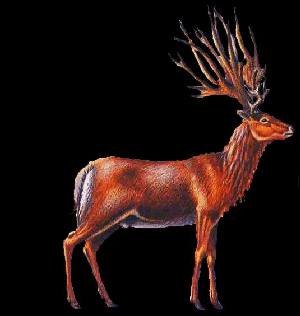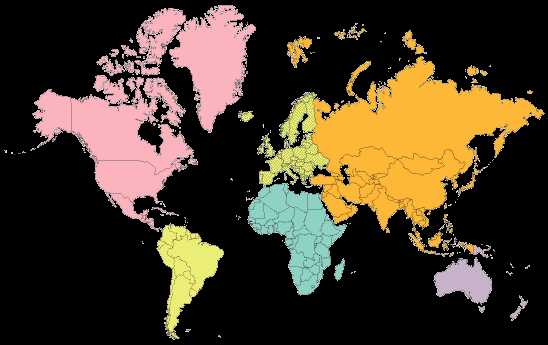
|

|
CERVIDAE SPECIES
Class : mammals
Subclass : herbivores
Order : artiodactyla (artios even, dactylos finger)
Suborder : ruminantia
Superfamily : cervoidea
Family : cervidae
|
Cervidae appeared on our planet 38 million years ago (Oligocene) in Asia. (By comparison, humans appeared only 2 million years ago.)
They quickly spread throughout the planet .
They are the principal ruminants of the Northern hemisphere and South America. Their characteristic feature is the presence of antlers for
the males. It is a bony forked excrescence which falls every year. Two exceptions are the female reindeer (rangifer)
grows antlers while the Chinese water deer (hydropotes) has no antlers at all.
|
Ancestors | Now
Ancestors
|
Two species have been identified:
|
 |
 |
| EUCLADOCEROS |
MEGALOCEROS
Irish elk |
Distribution : Europe (remains found in Italy)
Period : Pliocene to Pleistocene.
Size : 2,5 m length with antlers reaching to 1,7 m scale. |
Distribution : Europe, Asia
Period : Higher Pleistocene
Size : 2,5 m length with antlers reaching 3,7 m scale and weighing of more than 50 kg ...
This is the biggest deer to have existed. It completely disappeared from Europe 2500 years ago. It was the contemporary
of prehistoric man and were depicted it on the walls of caves. |
At the present time
|
Approximately 16 genders are referenced in America and Eurasia, from the Arctics to the Tropics. You can discover all those genders, species, sub-species above:
Classification by GENDER (decriptive forms of all genders, species and sub-species).
Classification by GEOGRAPHICAL LOCALISATION (There may be the same species in several different locations). Click on the part of the world which interests you.
|

|
|

|

|
|